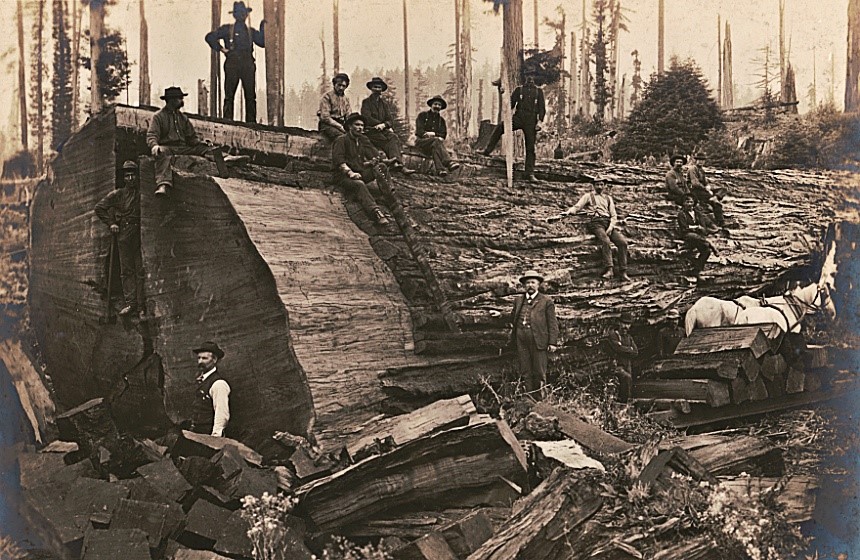Given that our planet-wide warming trend is to a large degree a result of excess carbon dioxide (CO2) in the air, my initial plan to help lower CO2 levels was to stop exhaling. That turned out to be a short-term solution. In order to reduce CO2, we need to take carbon from the air and stow it for a long time, preferably hundreds of years, which is quite a bit longer than I can hold my breath. Perhaps the best-known means of doing this is afforestation: planting new forests on terrain such as former strip mines or steep, overgrazed land. It can also be done by increasing the density of our urban forests by adding more trees.
Beyond carbon storage, there are myriad other reasons to plant trees. Forests prevent erosion, protect fisheries, filter air pollution, safeguard biodiversity, and provide us with priceless cultural and spiritual benefits.
Not everyone is able go out and plant a forest, however, or even a single tree. But there are other ways to reduce CO2.
For businesses, there are carbon offsets. Growing up in a strict Catholic home, I was intrigued by “Indulgences,” a way for sinners to rub out some of their black marks in the Eternal Ledger by paying a fee.
When I first heard about “carbon offsets,” it reminded me of Indulgences. If you pay enough cash, you can fly your Learjet to Nova Scotia to see the total eclipse of the sun, and through some accounting magic, not add CO2 to the air. Someone would quickly plant a forest of the proper size to compensate for your trip.
Apparently, I’m too cynical at times, because carbon offsets, whether in the form of tree-planting or other carbon-caching methods, do work — sometimes. Industries that give off a great deal of CO2 can buy offsets to reduce their carbon footprint. According to an article in Sustainability magazine, Jet Blue and Delta Airlines make extensive use of carbon offsets, with Jet Blue having reached “carbon neutrality” in 2020.
But there are limits to relying on forests for carbon offsets. Some experts say it can take ten years for a seedling to store enough carbon to balance out the CO2 emitted in the planting process and in the management of young forest stands. I was surprised to learn that forests don’t become meaningful carbon stores until they are around a century old. This is certainly another strong argument to preserve old-growth forests and to support conservation easements and land trusts as ways of protecting woodlands.
But fewer forests are able to reach that century mark. The reason is chiefly due to the short service-life of lumber. Buildings aren’t lasting as long as they once did, so more trees need to be cut down to provide the lumber to replace them. In the 1950s, the average age of U.S. homes at demolition was 111 years. By 2016, it had dropped to 58 years for homes and 43 years for nonresidential buildings. A big factor driving this trend is infill development, where existing homes are flattened by developers who then squeeze two or more houses onto the lot. Or, they tear down a mid-size home to build a much bigger one. (In 1973, the average new home had 1,600 square feet. By 2008, this figure had jumped to 2,519.)
With few exceptions, demolished homes are not dismantled so lumber can be reused. They are splintered with a grapple boom for expediency, and the whole mess trucked to a landfill. Splintered wood releases CO2 must faster as it rots because of the increased surface area. But the main point is that landfilling lumber is a waste of a perfectly good resource.
If we can give wood products a longer life, it’s almost like planting trees. It means existing forests can be left to stand for longer as pressure to cut trees for lumber drops.
The alternative to throwing lumber away in a landfill is called deconstruction, and it’s starting to gain traction here. About 6,000 board feet of good lumber can be salvaged from a typical 2,000-square-foot wood frame home. This amount of wood represents at least 33 big, mature trees. Plus, compared to demolition, deconstruction costs can be as much as 30 percent lower.
The biggest obstacle to more extensive use of deconstruction is that it is slow. Modern demolition is wasteful, but most homes can be crunched-up and sent to a landfill in a single day. Deconstruction may take several weeks. Still, we should consider the long view: Some log homes in Scandinavia date back 600 years or more. The least we can do is try to get a 2×6 rafter to endure beyond 50 years.
Obviously, most people aren’t going to demolish a building in their lifetimes. Yet we can still do a lot by influencing policy at a local level to promote deconstruction. In 2016, the city of Portland, Oregon, passed a deconstruction ordinance requiring wood from homes to be salvaged, not smashed. The new law is largely thanks to a handful of ordinary citizens.
Salvaged lumber is as strong as new lumber, and is used in construction. There’s also a demand for “distressed” lumber which is left exposed to add character. The salvaged lumber market is now growing at 4.6 percent annually, with a projected value of over $70 billion by 2028. Unfortunately, the industry is constrained by lack of widespread public acceptance, finding and retaining enough workers, and rising insurance costs, as well as other issues.
If we can encourage the salvage and reuse of building materials by way of incentives, and restrict wantonly wasteful practices through local laws and other means, we can do as much good as planting acres of forest. By all means let’s keep planting trees and indulging carbon offsets, but we should also look for other ways to help mitigate the effects of climate change.
Become a Saturday Evening Post member and enjoy unlimited access. Subscribe now



